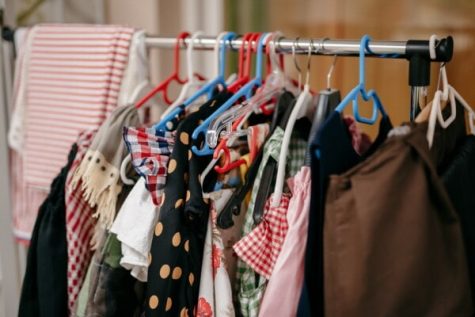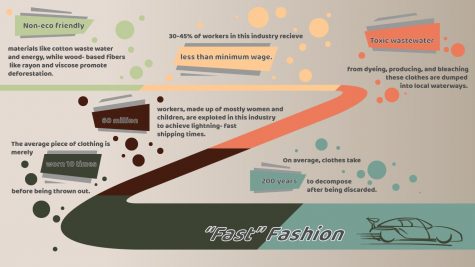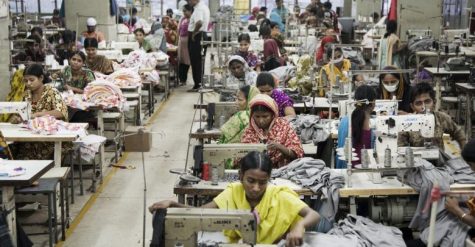A Pandemic Worn Everyday
Fast Fashion can be described as a “pandemic worn everyday” for its detrimental effect that it has. Some of the most popular brands, such as Nike and Victoria Secrets have ties to fast fashion.
March 9, 2021
Clothes are exciting. They allow for personal expression and a chance to push stereotypes. With over 40,000 fashion designers worldwide, every person is given the opportunity to discover what they like, and how they want to present themselves each day.

COVID-19 kicked in person shops to the curb, but this allowed for online retail stores to skyrocket in popularity. In May of 2020, in-person clothing stores and accessory shops were down 62.4% in sales in the United States and retail sales of clothing, textiles and footwear were 50.5% from their 2019 level in Europe. However, for online retailers, such as Zalando, a Berlin-based company, it was the opposite as they saw a 34% increase in sales. ASOS, an online fashion retailer based in the UK saw a 10% increase in sales, and Boohoo, also based in the UK, saw a 45% rise in sales in the March through May 31.

Social media is a huge reason why online sales increased so heavily. COVID-19 caused many individuals to experience boredom, so an influx of social media apps occurred, specifically the apps with the potential to promote ads for products on their platform. Instagram is able to promote companies’ products through their introduction of the shopping tab. Tik Tok’s For You Page features popular creators explaining different outfits and how to style accessories. Pinterest tags the specific store of the clothes featured in a picture. Youtube allows creators to show off their massive clothing hauls and why they bought what they did. Clothes have become more than just how you express yourself, but a competition in a sense. Having the best sense of fashion becomes the goal, and the better dressed a person is, the more attention and fame they recieve. But, to have the best clothes, you have to spend the most amount of money, right?

Wrong, this is where fast fashion is able to shine, even though its results are negative. Fast fashion is “the mass production of cheap, poor quality, disposable clothing.” Companies such as Shein, PrettyLittleThings, Zara and even Urban Outfitters rely on fast fashion to produce clothes that are very desirable and cost prospective customers little.. The clothes on these websites are cute and work well given their low prices, so what’s the problem with people buying cheap clothes that imitate a more expensive garment?

Fast fashion relies on the excessive labor of both children and adults, so a lot of the time child labor laws and minimum wage requirements are disregarded. Around 35%-40% of fast fashion workers are not paid the legal minimum wage of where they’re working. Additionally, since the clothes must be so cheap and the demand is so high, this leads to many child laborers being denied an education.

Fast fashion also causes a massive amount of clothes to be wastefully disposed of, since the intent of fast fashion is to produce clothes that are popular based on the current trends. According to clothes waste charity Traid Clothes Donation Bank, the average fast fashion garment is only worn 10 times before it is thrown away. Most of the clothes bought on fast fashion websites are not donated or recycled, but rather end up in landfills, resulting in massive costs for the environment and society since clothes take about 200 years to decompose.
Environmentally, fast fashion brings with it a whole slew of issues. Toxic wastewater is a byproduct of the industrial processes of the textile industry, and is incredibly harmful to both aqua marine human life. Greenhouse gasses develop from the companies attempts to meet the high demand to produce and ship the cheap clothes, which causes pollution that harms the environment. Deforestation often occurs with the production of fast fashion garments since chemicals used in the production of fabrics like cotton degrade the soil and wood-based fibres, like rayon and viscose, which lead to mass deforestation.

Knowing that it is possible to get fashionable clothes for incredibly cheap is definitely very appealing. I have been a victim to and perpetuated this pandemic, as well as many of my classmates, neighbors, teachers and more. As a society, we have decided it is desirable to find the best clothes for the cheapest price, but is the cheap cost a good enough reason to disregard the harmful effects that arise?


